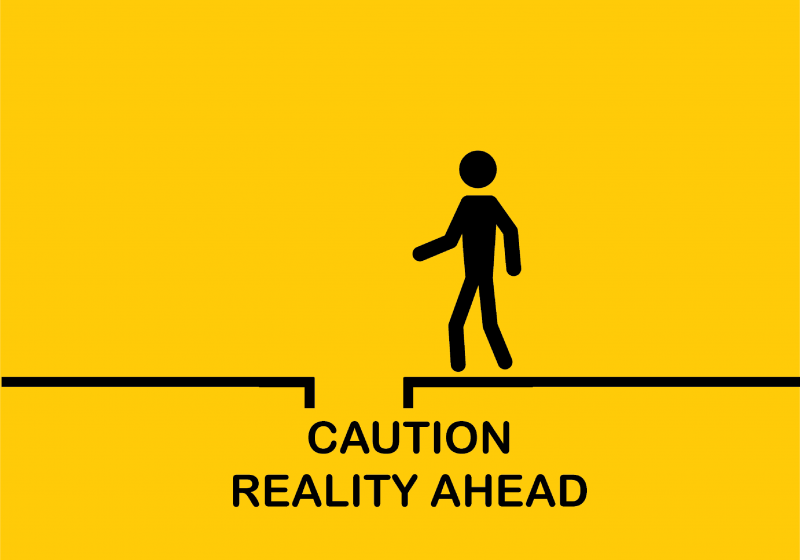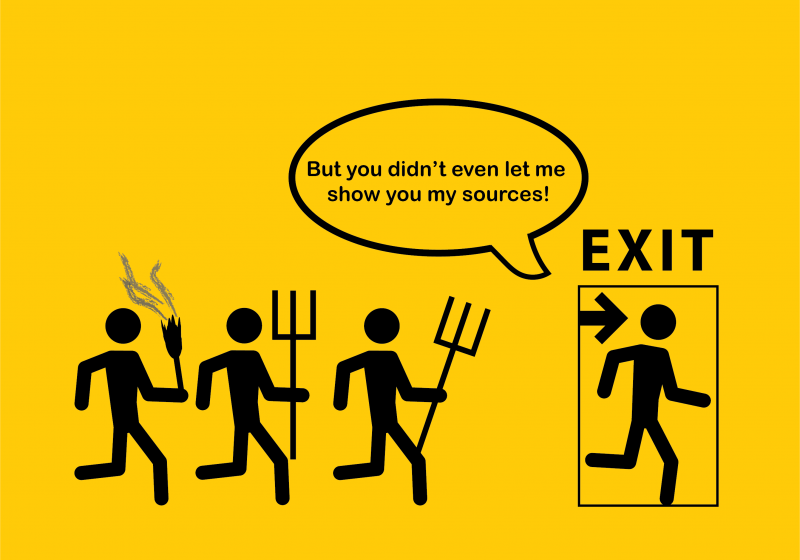Terra incognita: Navigating life as the only professionally-trained historian at work
16 April 2018 – Tony Pierucci

Image credit: Tony Pierucci.
There’s a gap between intellectually understanding something and actually grasping it and all of its ramifications. Two days into my new job in 2014, I fell headlong into that yawning space between intellectual understanding and grasping and spent the next few months scraping my knees and elbows clambering back out again. It was a rough way to start my career as a public historian.
And it had started so optimistically.
I was to be the curator of a small, 80-year-old museum in rural California. I would be its first professionally trained curator and, for a while at least, the only trained staff onsite. Fantastic, I thought, here was my chance to put my mark on an institution, to sketch a robust and effective program on an otherwise blank slate. Feeling prepared for the experience as a solo public historian, I took the job without hesitation.
Reality has a harsh way of dealing with misconceptions. It ripped mine from my grasping hands like the wind whipping a balloon away from a child. Like that child, I cried a bit. But after learning how to navigate the workplace as the only professionally-trained historian, I found a deep sense of gratification and came to love the unique position I found myself in.
But there was that whole wind stealing the balloon part. So, in hopes of sparing others a similar rude awakening, here are three helpful tips on how to avoid common missteps when you’re blazing your own trail at work.
- Rome was not built in a day…
Instead, it was built brick by brick. You should apply the same methodical process to the first few weeks or months of your new job. I know—you probably have a notebook with lists of ideas and plans you’re just itching to put into place. Control yourself, and put the paper down. There are many steps to take between now and item #1 on that list.
To begin with, you have to lay or repair basic professional infrastructure. This process might be as simple as establishing a workstation and stocking up on office supplies. Or, it can be as complicated as creating or updating professional policies and procedures. Sit down as soon as you can and brainstorm what you consider the bare-bone essentials you need to do your job and make a prioritized list of how to rectify any shortfalls. If you ignore this step, you won’t get very far down the road before spraining your ankle in one of these potholes.
Starting slowly also allows you time to learn the lay of the land. Every workplace is different, and the last thing you want to do is step on any toes in your mad dash to implement your plans.
- Parlez-vous academia?
If you’ve ever tried to explain your latest research project to an interested family member at Thanksgiving, then you’ll understand this tip. Their interest soon turns into disinterest and ultimately mild panic, as your overly long description pins them, trapped and helpless, to their seat.

The quickest way to kill a meeting is to cite chapter and verse the academic foundation of your new project. If prompted to, then by all means wax poetic. Otherwise, keep your bibliography to yourself. Image credit: Tony Pierucci.
In any situation, to communicate effectively and persuasively, you need to know your audience. In the case of your new job, your audience is either completely unaware, or marginally aware of professional historical practices. Learn to edit yourself to fit the situation and the person with whom you’re communicating. Are you writing a weekly report to your supervisor? Cut to the chase and give her what she needs—an update, not a lengthy dissertation on the theoretical framework for the new school tour you’re developing. Brevity should guide all business communications, but this is especially so when your colleagues don’t share the same dictionary as you.
There’s a corollary to this step: get into the habit of packaging your wants and needs in the same gift wrap as the rest of the workplace. Do you want to get more visitors to your museum? Asking for more money for marketing probably won’t get you anywhere. After all, why would the county chief administrative officer care about museum visitation? On the other hand, wanting to “position the museum in such a way as to help promote the new destination tourism initiative being unrolled” might get her attention.
- Listen, because you don’t know everything
The best way to start any new job is to listen. If your supervisor hasn’t already organized it, find out who has worked there the longest and ask him/her for a tour of the place. You might have the background and the experience, but you completely lack the most important type of knowledge: institutional knowledge. Ask questions and genuinely listen to what your guide has to say. Approaching your new position with an open willingness to listen and learn from your colleagues will not only get you important information, but will also make you many friends.
You’d be surprised how many staff were anxious about your arrival, fearing you’d be a know-it-all instead of a valuable asset to the team. If you immediately start work by emailing coworkers scanned pages from your notebook of ideas, you’ll only confirm their fears. Remember, your coworkers probably already have plans of their own. Some of the best public programming I’ve participated in was the brainchild of coworkers who never attended a class in public history. Those different backgrounds in the workplace make for more vantage points. Yours will not always be the best.
________________
Since that first job, I have continued to work in places as the first or only public historian on site, and I love it. I know that this type of work can be jarring at first. After all, from graduate school to professional conferences, we as public historians are conditioned to working with our professional peers. And staying connected to each other through membership in organizations like NCPH is important.
But if you do find yourself wandering from the pack, toiling away in your own community of non-traditional peers, enjoy the experience. Just remember to mind the gap.
~ Tony Pierucci has worked in archives, museums and archaeological excavations throughout the country. He is currently the curator of history and historic preservation officer for Riverside County Regional Parks and Open-Space District in southern California.



